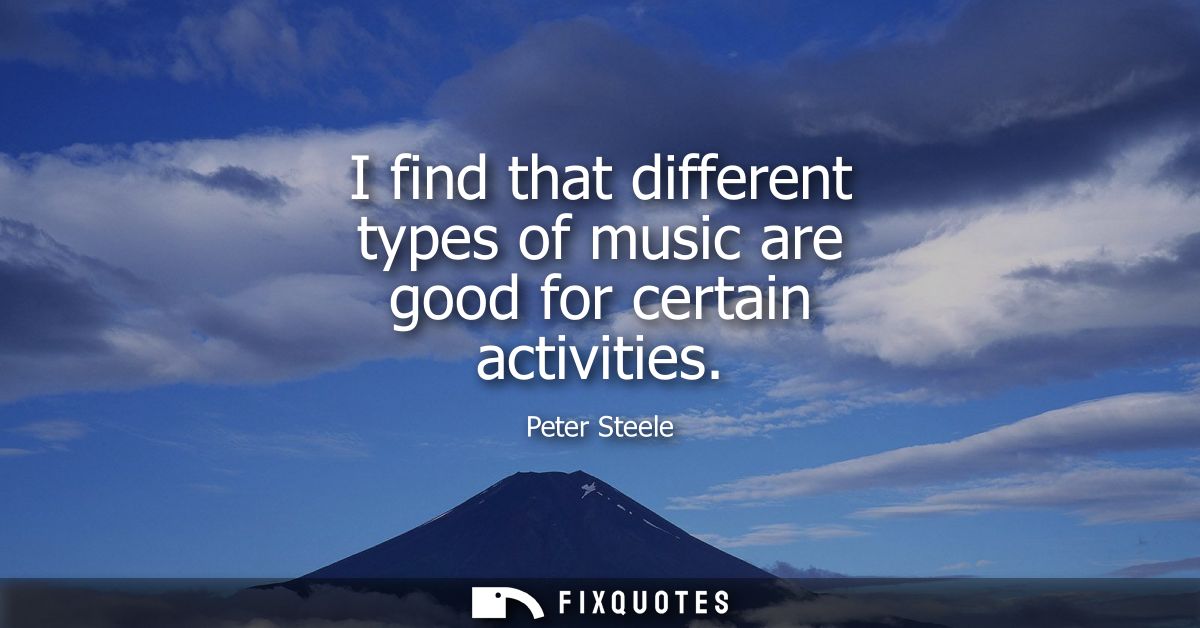"I find that different types of music are good for certain activities"
About this Quote
The observation recognizes music as a tool of situational alignment rather than a universal backdrop. Genres carry distinct tempos, textures, and emotional colors that interact with the body and mind in task-specific ways. Upbeat, rhythmically regular tracks entrain movement and elevate physiological arousal, making them ideal for running, cleaning, or any activity requiring momentum. By contrast, sparse, ambient textures lower cognitive intrusion and help sustain attention during reading or deep work, where lyrics might compete with verbal processing.
There is also a social dimension. Music functions as a signal that frames gatherings, dance, ritual, or quiet conversation, setting boundaries for what kind of energy is welcomed. The same person who seeks aggressive guitars for cathartic exercise may prefer mellow jazz at dinner to invite warmth and space for dialogue. Context is not a constraint on taste; it is a way of amplifying intention.
Psychologically, this is arousal regulation and mood modulation. We reach for sound that complements or corrects our current state: downtempo for overstimulation, brisk beats for lethargy. The principle extends to creativity, where certain harmonic palettes or timbres can prime imagination, and to mourning or celebration, where songs help metabolize emotion collectively. Even driving illustrates the rule: steady midtempo rhythms can support focus, while overly complex music might hijack attention.
Steele’s observation also honors music’s materiality. It is not only meaning and lyrics, but time, pulse, and dynamics. Matching these elements to the demands of a moment is a form of craft, like choosing lighting for a room or seasoning for a dish. Curating playlists becomes a subtle navigation of self, body, and environment.
At heart, the statement advocates intentional listening. By recognizing how different sounds shape behavior, we can design daily life, turning routine activities into experiences with texture, purpose, and flow. The right song becomes strategic atmosphere everywhere.
More details
About the Author

